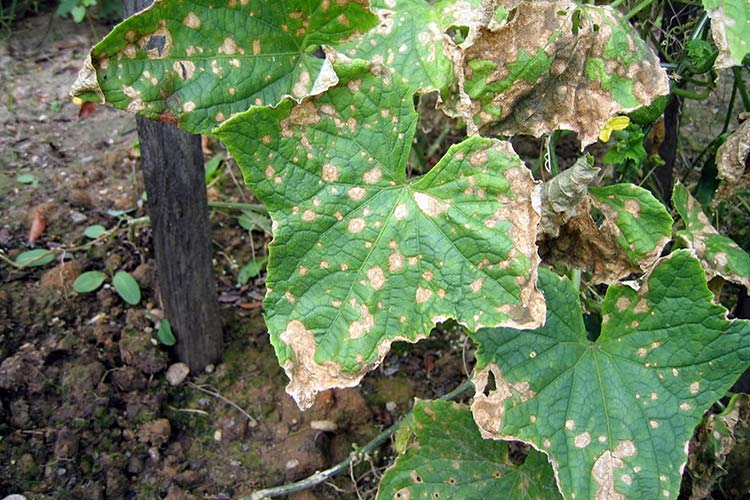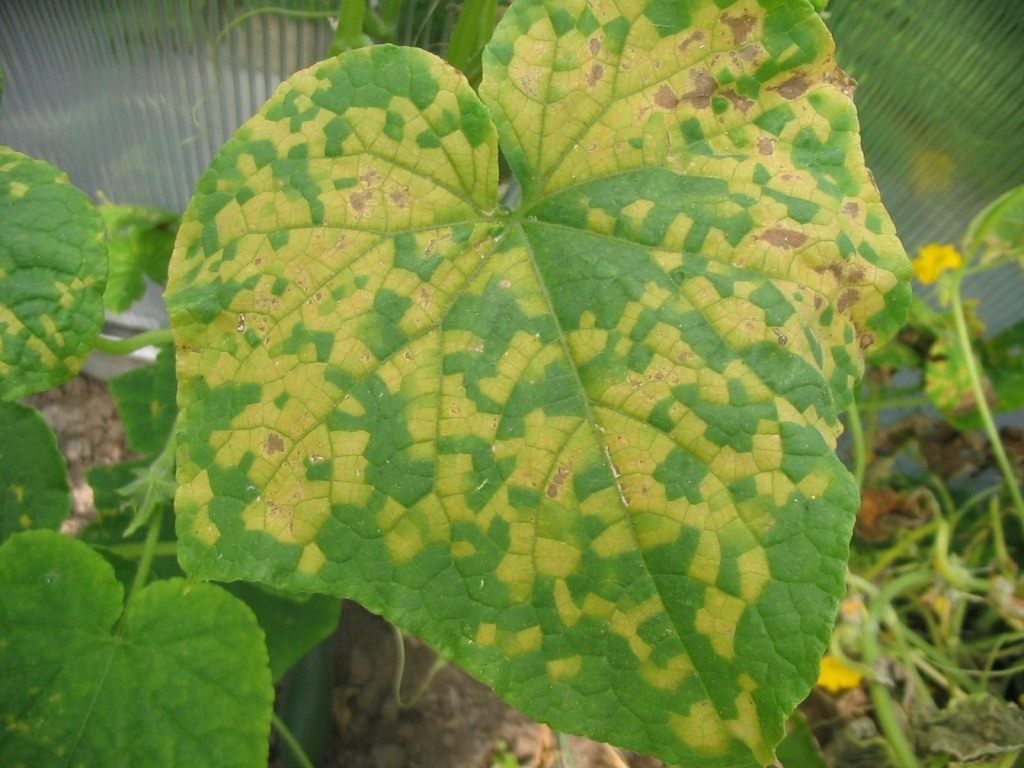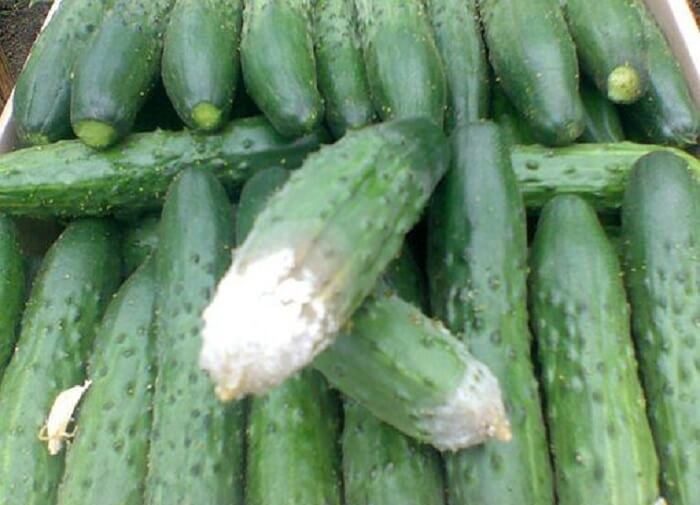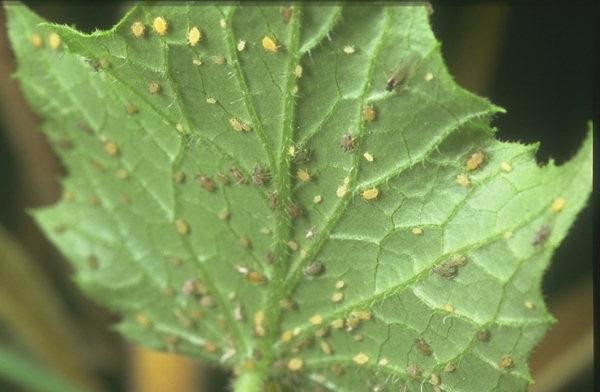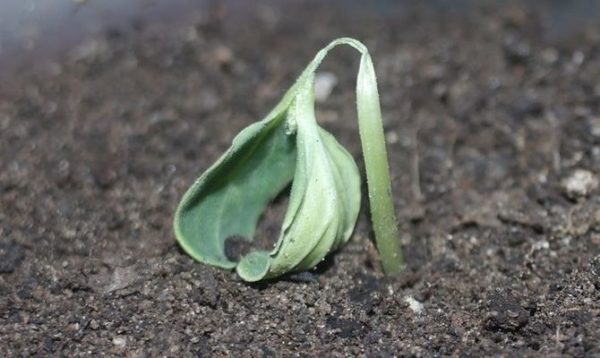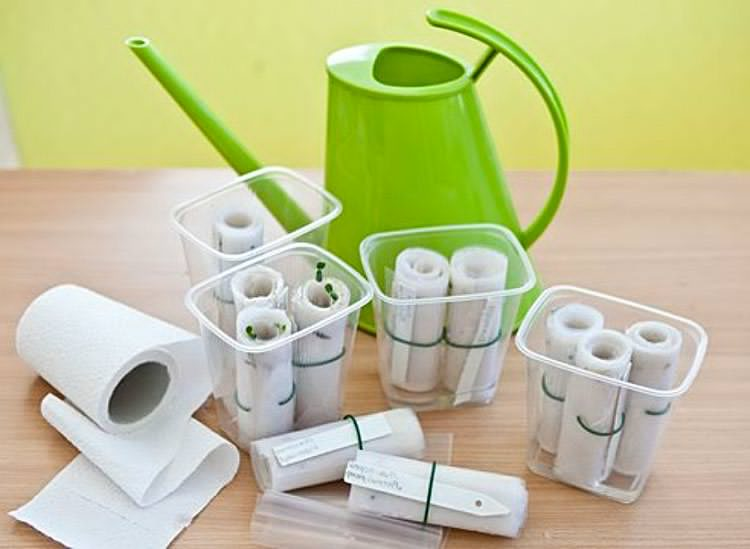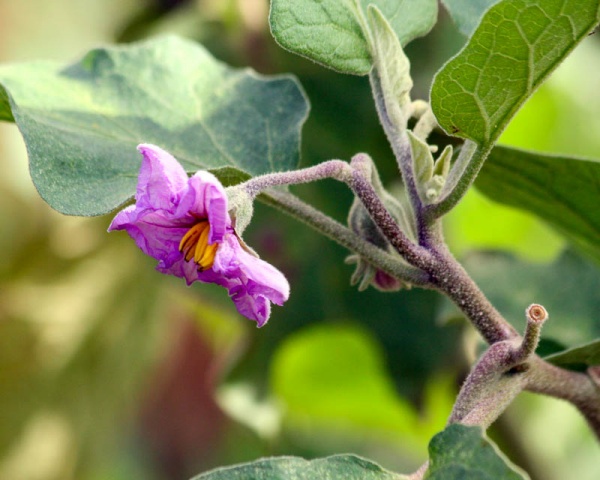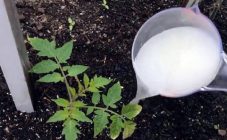Content:
- Conditions for growing cucumber seedlings in a greenhouse
- When can you plant cucumber seedlings in a greenhouse
- Everything you need to know about disembarkation
- How to transplant cucumber seedlings into a greenhouse
- Further care: advice from experienced gardeners
- Diseases and parasites affecting bushes in the greenhouse
To build a polycarbonate greenhouse, areas with a flat surface or some southern slope are suitable. It is advised to select a site that has a groundwater level at a depth of 2 m. It is necessary to make the height of the greenhouse about 2 m. It is not recommended to do less, since the cucumber vine grows up to 3–3.5 m. It is also not worth building a greenhouse higher than will warm up more slowly.
Conditions for growing cucumber seedlings in a greenhouse
The air temperature in the greenhouse should not be less than + 15-16 ° C, if the temperature is lower, the seedlings will grow and develop slowly, and at a temperature of + 12 ° C the seedlings may die completely.
When can you plant cucumber seedlings in a greenhouse
It is better to sow seeds of self-pollinated varieties in peat pots in an apartment. Planting of seedlings of cucumbers in the greenhouse is carried out when 3-4 true leaves appear on it. This usually occurs when the seedlings are 1 month old. But the seedlings must not outgrow.
Experienced gardeners advise transplanting seedlings as early as possible, the younger it is, the easier it is to transplant and adapt better. This is due to the fact that the small roots are less damaged during transplantation. Therefore, planting cucumbers in a greenhouse with seedlings is possible in the cotyledon phase.
They are transplanted into an unheated greenhouse when the soil warms up to 15 ° C, as cucumbers need warmth.
Next, in the ground where the seedlings will be planted, insert a thermometer to a depth of about 20 cm, leave it for half an hour. Then the result will be the most objective.
To make the soil warm up faster, you can cover it with a polyethylene film or build a warm bed, spill it with hot water, and then cover it with a film.
In an unheated greenhouse in the Moscow region, it is required to plant seedlings in early May, that is, in the house you need to sow seeds for seedlings in early April, while tomatoes are sown in February.
The air temperature in the greenhouse should be + 22-25 degrees during the day and + 16-20 degrees at night.
Everything you need to know about disembarkation
The soil for cucumbers should be fertile, breathable and permeable, and have neutral acidity characteristics. Loams are great. The clayey soil is too heavy for this culture, it does not allow air to pass through well. Sandy soil is loose, but moisture does not retain in it, and plants do not grow without water. Sandy loam can also come up if you add a little clay to them.
You can not plant seedlings in the ground in which any representatives of the pumpkin family grew, fungi, bacteria, pests characteristic of cucumbers remain in the soil.
Cucumbers can be planted after nightshade trees have grown in the greenhouse - tomatoes, eggplants, peppers.
Land preparation
You can sow green manures in the fall after harvesting, and before the frosts, dig up the soil along with the green manure. Mustard is best suited, it will disinfect the earth, and also saturate it with trace elements.
In winter, it is required to throw snow into the greenhouse, then in spring the earth will be sufficiently moist.
Then you need to make a substrate by mixing 4 parts of sod soil, 2 parts of humus and 1 part of sand. The substrate is sieved so that there are no lumps. It is advisable to bake it in the oven for half an hour to disinfect it.
Then add 1 liter of vermiculite, a glass of ash, 2 tbsp. To the bucket of the substrate. tablespoons of superphosphate. Then scatter the mixture over the greenhouse.
Another composition is to mix 5 parts of peat, 2 parts of field soil and 3 parts of humus. It is also recommended to add sawdust from pine and spruce trees. When decaying, they will enrich the substrate with nitrogen and generate heat.
It is required to scatter 30 g of superphosphate and 30 g of potassium sulfate on 1 m², dig up the ground to a depth of 20-25 cm, spill it with a solution of copper sulfate (7%). That is, you need to pour 700 g of copper sulfate into a bucket of clean water (10 l), mix thoroughly and spill the earth. Then you should break up large clods of soil with a rake or a shovel. According to the lunar calendar, seedlings cannot be planted with a new moon and a full moon. In 2018, it is better to replant seedlings on April 29.
Landing scheme
To make beds, ridges, you need to dig a trench 40 cm deep, and pour fresh manure on the bottom.
Further, to plant seedlings of cucumbers in the greenhouse, you should pour fertile soil with a layer of 15 cm. The planting scheme is the distance between rows of 40–70 cm, and between the ribbons - 75–90 cm. In one row, there should be a distance of 30–40 cm between the seedlings.
It is also necessary to make trellises from twine and wire, they need to be placed every 10-15 cm at a height of up to 150-200 cm.
How to transplant cucumber seedlings into a greenhouse
You need to dig holes, keeping a distance of 30–40 cm. After that, you need to spill them with warm water with several crystals of potassium permanganate in order to disinfect the soil.
Seedlings should be planted by deepening the peat cups to the first true leaf or cotyledons. Compact the soil a little, sprinkle with dry soil. You can also add mulch to the beds to help the moisture evaporate more slowly and keep warm.
Further care: advice from experienced gardeners
Seedlings must be watered, loosened the soil. The bushes need to be fed after 10-15 days.
Top dressing
- Before the buds bloom, it is required to feed the seedlings with nitrogen, and then with phosphorus. When flowering, you need to fertilize regularly. It is better to fertilize plantings in the evening, this should be done 4 hours after watering. In this case, you should also water the cucumbers in the morning, this will moisten the earth, and the second evening watering will protect the plants from burns.
- It is very good to do foliar feeding on foliage. To do this, pour 2 g of boric acid, 2 g of potassium permanganate, 2 g of copper sulfate into a bucket of clean water (10 l). Spray foliage and stems in the morning or evening, trying to get to the back of the foliage.
- You can fertilize the planting with infusion from the tops. Pour the cut grass, fallen leaves into the barrel by 2/3, pour water to the top, cover with a lid. Leave the infusion for 10 days to ferment. Feed the culture when the infusion is completely fermented. To do this, pour 1 liter of infusion into a bucket of water. It is necessary to water the bushes at the root. But this top dressing has a minus: when it wanders, it emits an unpleasant smell. To somewhat reduce the intensity of the smell, it is worth dropping a few drops of valerian into the barrel.
- You can feed with yeast: 100 g per bucket of clean water, add 2 tbsp. tablespoons of granulated sugar. If the yeast is fresh, you can start watering immediately after placing it in water, if dry, you should wait 2 hours for the solution to infuse, and then water.
- Yeast can be fertilized no more than 2 times during the growing season. After such fertilization, the bushes begin to grow actively.
Watering
It should be watered with extremely warm water, as cold water leads to root diseases, for example, to root rot. It is best to make grooves around the bushes and pour water into them. Watering the bushes at the root rather than in the grooves can expose the root system, leading to a strong reduction in the number of ovaries.
Water can be collected in advance and left in the greenhouse, then it will be at room temperature. In the heat, the bushes should be watered daily. This is done in the morning before the sun rises, or in the evening after sunset.
You need to pour 15-25 liters of water per day per 1 m². And when ovaries appear, the volume of water should be increased, pouring 20-30 liters per 1 m².
Loosening the earth, airing the greenhouse
It is imperative to loosen the soil shallowly, this will help ensure the supply of oxygen to the roots, then they will not rot.
It is necessary to ventilate the greenhouse for 30–70 minutes a day. in cool weather. If it's hot, the vents must be opened for the whole day.
Garter
First, you need to plant the seedlings, after 7 days after that, you should stretch a wire or a cord made of nylon at a height of 1.5 m and stretch a twine from it to each seedling.
You can also stretch the mesh in the form of 2 canvases at an angle, and attach the mustache of the bushes to the mesh.
Seedling problems
- If the stems of the bushes stretch out, and the leaves turn pale or turn yellow, you need to feed them with a carbamide solution, pouring 50 g into a bucket of clean water.
- If the bushes grow quite intensively, but there are very few flowers, the plants are probably lacking in phosphorus and potassium.
- If the plants have a small number of ovaries, it is necessary to feed them with a solution of chicken manure. This should be done when the daytime temperature settles within + 17-18 degrees. At night, the greenhouse needs to be ventilated, but drafts cannot be made.
- If there are a large number of ovaries on the bushes, but the bushes grow slowly, it is recommended to feed them with a mullein.
Diseases and parasites affecting bushes in the greenhouse
Cucumber bushes in the greenhouse can get sick with anthracnose, downy mildew, gray and white rot, root rot. They can be attacked by parasites: melon aphids, spider mites, greenhouse whiteflies.
Anthracnose
This is a fungal disease. Anthracnose can be found in brownish yellow round specks on foliage. As the disease progresses, the leaves become brittle and begin to crumble. Deep spots appear on the vine, they are covered with pinkish-red mucus. The taste of Zelentsy becomes bitter. When a disease appears, it is better to discard the cucumbers, and spray the bushes with 0.4% copper oxychloride (0.4%).
Powdery mildew
At the onset of the disease, a small whitish bloom appears on the leaves. Then the leaves turn brown and fall off. If a disease is detected, it is necessary to cut off diseased leaves and stems. And then spray the culture with preparations with sulfur, for example, Tiovit Jet, Topsin. And after 1-2 weeks process again.
Downy mildew
First, brownish-yellow specks are visible on the foliage. Then they gradually expand and merge. A grayish purple bloom can be seen on the underside of the foliage. And then the bushes shed their leaves. If a disease is detected, it is worth stopping watering, sprinkling the ground with wood ash. Spray the plants with Fitosporin solution.
Gray rot
Slippery grayish spots are visible on the fruits, they increase.Sick cucumbers need to be thrown away, cut the infected parts of the stems. Sprinkle the places of the cuts with lime, powdered coal. You can spray the bushes with Bordeaux mixture. If the disease has spread strongly, the beds should be sprayed with Rovral or Hom.
White rot
A whitish fluffy bloom, similar to cotton wool, appears on the foliage, vine. Plaque converts to mucus. Bushes rot. If the fungus has just arisen, you should powder the bushes with copper-chalk powder. It is necessary to spray the vine and foliage with Profit, Speed.
Bacteriosis
Small pale brown sores are visible on the cotyledons, and angular specks on the leaves. Then the foliage becomes brown, dries and falls off. Cut the infected foliage. Treat the plants with Bordeaux mixture.
Root rot
In cucumbers, the roots begin to rot, then the lower leaves turn yellow, brownish specks are found on the root collar. The leaves become deformed and covered with small brownish specks. The bushes need to be sprayed with Trichodermin, Bactofit.
Melon aphid
These are tiny parasites with a body length of about 2 mm. They are black or dark green in color, appear in July or August. For elimination, such an infusion helps well: 30 g of red hot pepper and 200 g of tobacco dust must be poured into a bucket of hot water, left for a day, drain, add 3 tbsp. tablespoons of tree resin and pour in 1 tbsp. spoon of detergent. You can also spray the bushes with Inta-Vir from aphids.
Greenhouse whitefly
These are small white butterflies. To destroy pests, plantings should be sprayed with Aktofit (0.2%).
Spider mite
It can be found by a small cobweb on the culture. Plants should be treated with Fitoverm, Akarin.
With proper observance of all of the above conditions for growing cucumbers in a greenhouse, you can harvest a bountiful harvest of crispy cucumbers.




